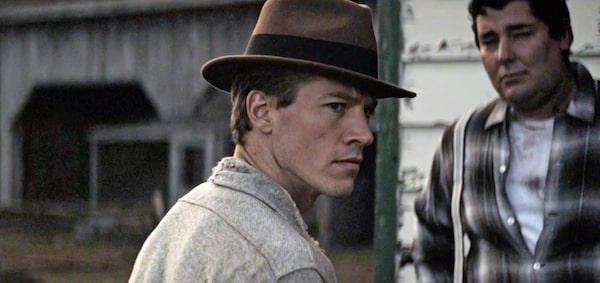
Murder Among the Mormons on Netflix hooks you from the get-go.Courtesy of Netflix
Right now, like many of you, I’m not drawn to the true-crime saga about some horrible serial killer. But the true-crime genre expands and expands and, yes, I’ll look at good stranger-than-fiction stories. Today let’s talk about two new entries in that arena. One’s really about a bizarre scandal that evolved into a series of bombings that left two people dead and another person seriously injured. The other, a Canadian production that’s going to a U.S. streaming service, takes a jocular approach while staying inside the true-crime mystery framework.
Murder Among the Mormons (new on Netflix) hooks you from the get-go. We meet an older man, Shannon Flynn, patrician-looking in a natty suit with a bow tie and talking in a light, fluting voice. “Can I ask a favour?” he says to the interviewer. “Don’t make me answer that. Let someone else do it. I don’t want to make a hero out of him. Because he was fantastic.”
Binge-watching guide: More than 30 series and specials to help you get through winter
Who? Well that would be Mark Hofmann, once called the “Indiana Jones of Mormon documents” by the press. In the early 1980s, he claimed to have discovered a cache of documents and letters that would change the core belief system of the Church of Jesus Christ of Latter-day Saints (LDS). In the small world where such documents are collected, and in a church where history is vital to belief, he was a sensational figure. Outside of Salt Lake City, mind you, he was unknown.
Then one October morning in 1985 there were two explosions in Salt Lake City and the community was both rocked and terrified. A businessman who acted as liaison between document collectors and church elders was dead. Later the same day, another bomb killed an employee of that businessman. The next day, a car bomb seriously injured Hofmann.

Mark Hofmann plays a renowned collector of rare documents who becomes a victim of the pipe bomb blasts in Murder Among the Mormons.Courtesy of Netflix
Initially local police thought the bombings were connected to business dealings unrelated to the LDS church. But as they looked into Hofmann’s life and work they believed they’d found evidence that he was selling forgeries. He denied everything, of course. In truth he had succeeded because he traded in genuine documents and letters but made much more money with forgeries.
For a while his impact on the LDS was profound. In Mormon teachings, the Angel Moroni appeared to Joseph Smith and gave him the golden plates from which Smith translated the Book of Mormon. In documents Hofmann discovered and claimed were genuine, a “magic salamander” led Smith to the plates and ordered Smith to have his dead brother Alvin make use of the plates. One expert on Mormon teachings says, “Instead of gods and angels, now it’s salamanders and magic!”
The story – the production is originally made by BBC Studios – is told in three episodes, which means it doesn’t meander. Co-directors Jared Hess and Tyler Measom keep it a tight, bizarre but well-told story. (Hess famously directed the cult-classic movie Napoleon Dynamite and grew up in the Mormon Church as did Measom) It’s not until Hofmann’s psyche is explored and his later statements relayed, that you get a full sense of the horror beneath this bloodcurdling story.

For Heaven's Sake, streaming on CBC Gem and Paramount+, tells the story of Harold Heaven who disappears from his remote Ontario cabin in 1934, never to be heard from again.CBC
With For Heaven’s Sake (streams Thursday, CBC Gem and Paramount+), we are into the territory of true-crime documentary/comedy series. We follow the real Mike Mildon and his pal Jackson Rowe, both connoisseurs of true-crime stuff, as they attempt haphazardly to solve a case as cold as Minden, Ont., in mid-winter. It’s the location where, in 1934, Mildon’s great-great-uncle, Harold Heaven, disappeared.
Harold was well-known in the area: The family had a cabin there; he was building his own home and was buying land. One October night, he left his lakeside cabin was never seen again. It was an odd disappearance. It looked like he had just stepped out, left a lamp burning and left the key in the door. It also appeared he had left dressed in a suit, a fedora hat and carrying his rifle. Local police ruled it a suicide, for which there was little evidence, and the body was never found.

Heaven's great-great-nephew attempts to solve the mystery of his disappearance 86 years later, in this documentary-style comedy.CBC
Today, Mildon and Rowe talk to the large extended family – zany characters some of them – and are intent on solving the case as amateurs. They’re a bit hopeless, but not entirely. A framing for this ramshackle, eight-part story is their regular interviews with a local radio station in Haliburton, Ont., where they give regular updates on their work.
As true-crime, it’s an intriguing cottage-country mystery. As offbeat comedy, it’s loopy and charming.
Plan your screen time with the weekly What to Watch newsletter. Sign up today.